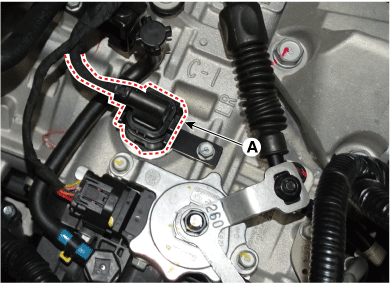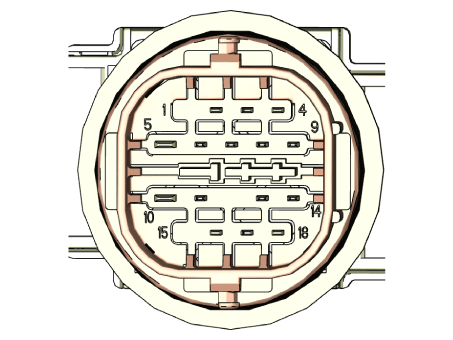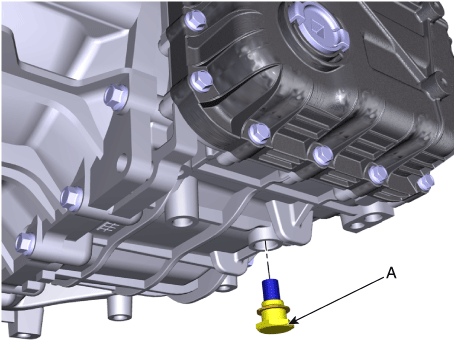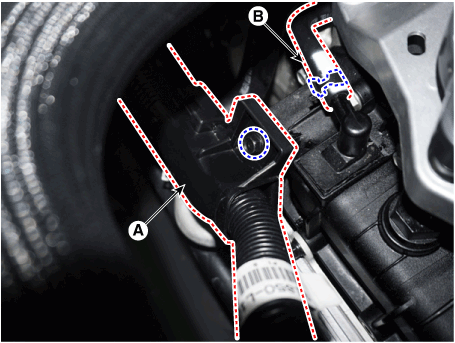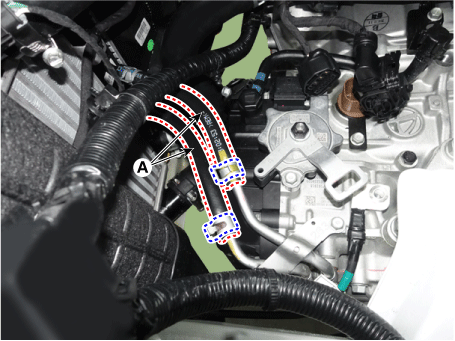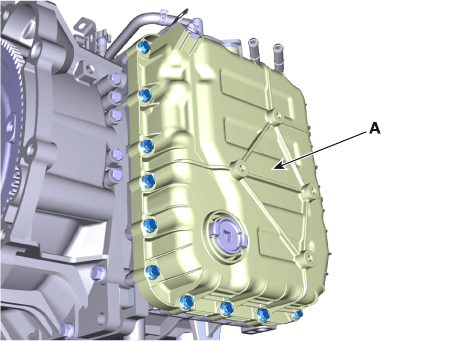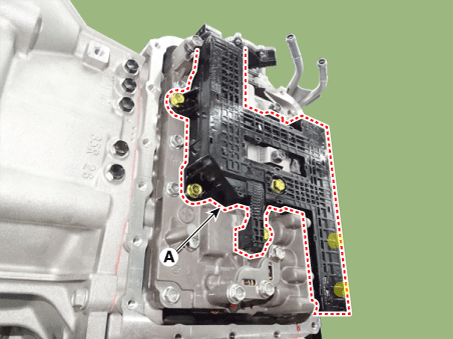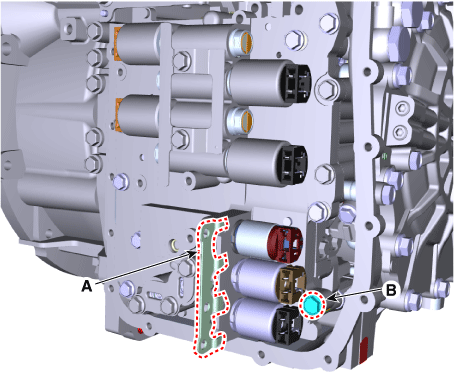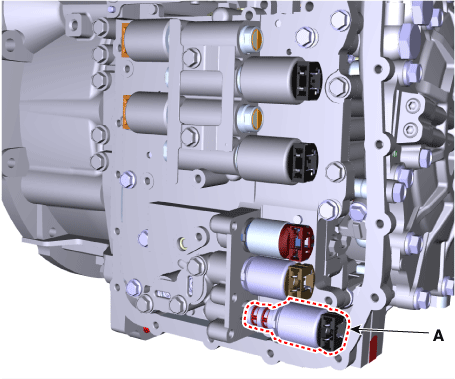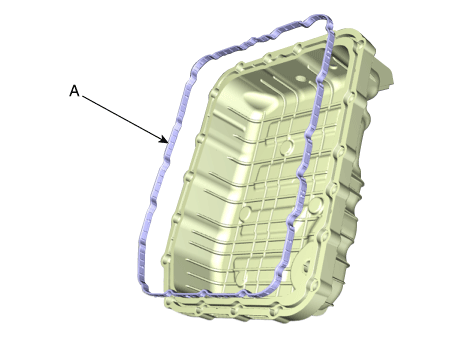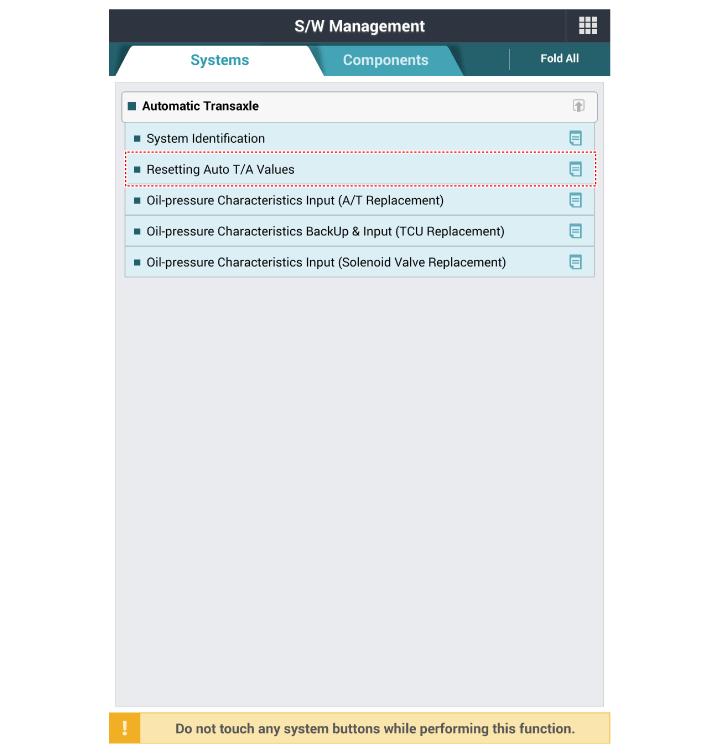Kia Optima: Hydraulic System / Line Pressure Control Solenoid Valve
Specifications
| Specification |
|
Item |
Specification |
|
Control type |
N/H (Normal High) |
|
Control pressure (kpa (kgf/cm², psi)) |
0 - 519.75 (0 - 5.3, 0 - 75.38) |
|
Currency (mA) |
0 - 850 |
|
Coil resistance(Ω) |
5.1 ± 0.3 |
Description and operation
| Description |
| • |
Line pressure control solenoid valve is a Variable Force Solenoid (VFS) type. |
| • |
When TCM supplies variable current to solenoid valve, line pressure is controlled by solenoid valve. |
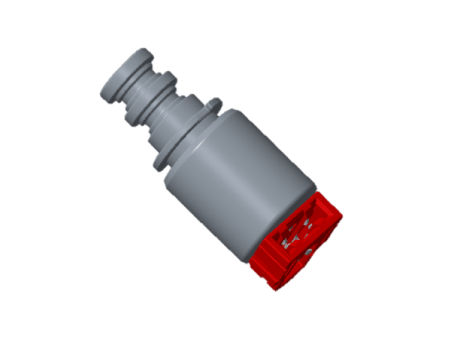
Components and components location
| Component Location |
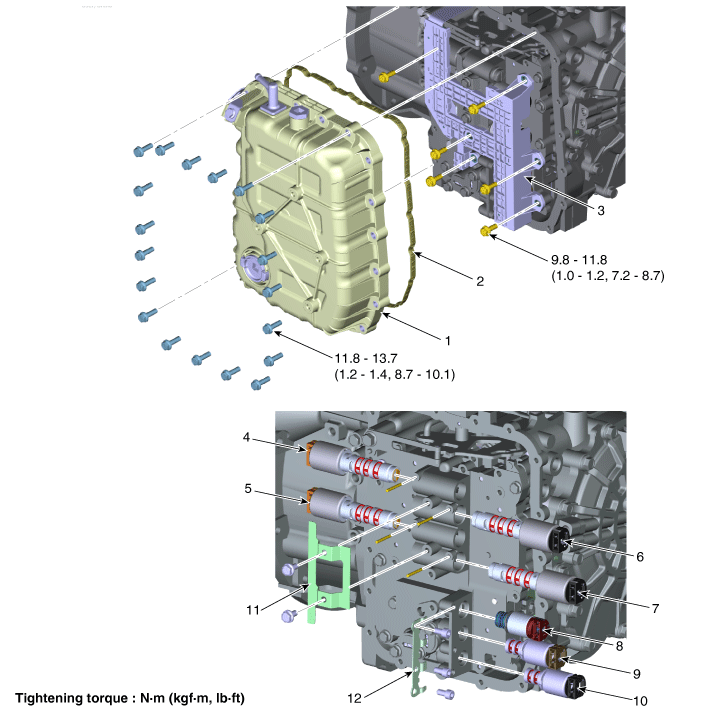
| 1. Valve Body Cover |
8. SS-A ON/OFF Solenoid Valve
|
| 2. Valve Body Gasket |
9. Torque Converter Control Solenoid
Valve |
| 3. Main Harness |
10. Line Pressure Control Solenoid
Valve |
| 4. 26 Brake Control Solenoid
Valve |
11. Support Bracket |
| 5. 35R Clutch Control Solenoid
Valve |
12. Support Bracket |
| 6. Underdrive Brake Control Solenoid
Valve |
|
| 7. Overdrive Clutch Control Solenoid
Valve |
Repair procedures
| Inspection |
| 1. |
The automatic transaxle system can be more quickly diagnosed for troubles by using the vehicle diagnostic system (KDS). (Refer to "DTC guide") KDS provides the following information.
|
| Component inspection |
| 1. |
Switch "OFF" ignition. |
| 2. |
Remove the air cleaner assembly. (Refer to Engine Mechanical System - "Air cleaner") |
| 3. |
Remove the battery and battery tray. (Refer to Engine Electrical System - "Battery") |
| 4. |
Disconnect the solenoid valve connector (A).
|
| 5. |
Measure the resistance between power terminal (5) and signal terminal (17).
|
| Removal |
|
| 1. |
Remove the under cover. (Refer to Engine Mechanical System - "Engine Room Under Cover") |
| 2. |
Remove the ATF drain plug (A), allow the fluid to drain out and then reinstall the drain plug.
|
| 3. |
Remove the air duct and air cleaner assembly. (Refer to Engine Mechanical System - "Air cleaner") |
| 4. |
Remove the fixing clip (A) and the air breather hose (B).
|
| 5. |
Separate the ATF cooler hose (A).
|
| 6. |
Lift the vehicle after loosening valve body cover upper bolts. |
| 7. |
Remove the valve body cover (A) by loosening bolts.
|
| 8. |
Remove the main harness (A) after removing the bolts.
|
| 9. |
Remove solenoid valve support bracket (A) and then loosen the valve body mounting bolt (B).
|
| 10. |
Remove the line pressure control solenoid valve (A).
|
| Installation |
| 1. |
Install in the reverse order of removal.
|
| 2. |
Perform the procedures below after installing.
|
 Overdrive Clutch Control Solenoid Valve (OD/C_VFS)
Overdrive Clutch Control Solenoid Valve (OD/C_VFS)
Specifications
Specification
Item
Specification
Control type
N/H (Normal High)
Control pressure (kpa (kgf/cm², p ...
 SS-A Solenoid Valve (ON/OFF)
SS-A Solenoid Valve (ON/OFF)
Specifications
Specification
Item
Specification
Control type
ON/OFF
Voltage (V)
9 - 16
...
Other information:
Kia Optima DL3 2019-2024 Owner's Manual: Explanation of scheduled maintenance items
Engine oil and filter The engine oil and filter should be changed at the intervals specified in the maintenance schedule. If the vehicle is being driven in severe conditions, more frequent oil and filter changes are required. Drive belts Inspect all drive belts for evidence of cuts, cracks, e ...
Kia Optima DL3 2019-2024 Service and Repair Manual: Engine Control System
Description and operation Description If the Gasoline Engine Control system components (sensors, ECM, injector, etc.) fail, interruption to the fuel supply or failure to supply the proper amount of fuel for various engine operating conditions will result. The following situations ...

